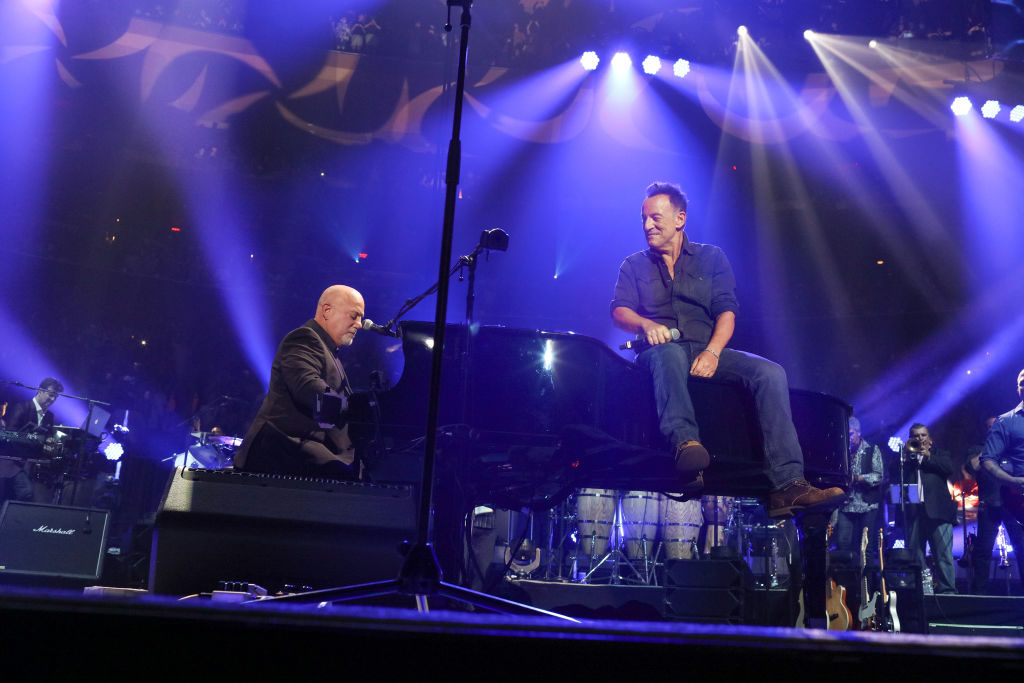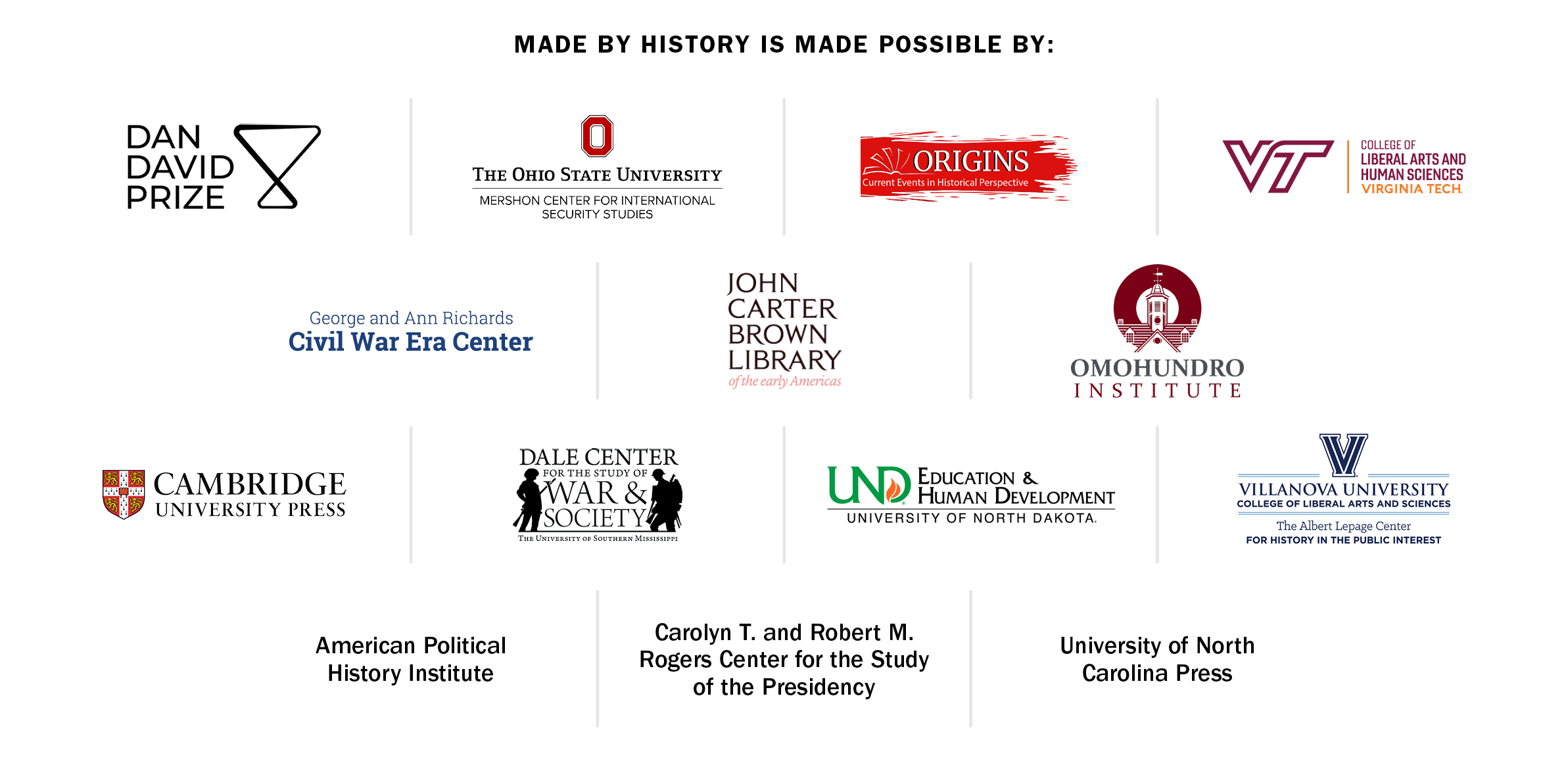
Fifty years after their 1973 debut albums on Columbia Records, Bruce Springsteen and Billy Joel have had dozens of top 10 hits, sold hundreds of millions of records, and continue to fill arenas and stadiums. Their success is undisputed and their legacies secure. What doesn’t often receive attention is how, a half-century later, the suburban roots of both men still play a key role in shaping the contours of those legacies.
By the middle of the 20th century, New York City had developed a distinct musical culture that reflected its polyglot character. From earlier eras, the city had spawned minstrelsy, Broadway show tunes, and the Tin Pan Alley recordings, producing superstar performers like Irving Berlin and Tony Bennett. Gotham was also the nexus of the nation’s radio, record, and television industries.
And yet even as this was happening, traditional American popular music met a revolt from the hinterlands. The Mississippi Delta produced an array of young artists with unique musical approaches, from Robert Johnson to Elvis Presley; the hollers of Appalachia spawned Patsy Cline and Loretta Lynn; the grimy industrial port of Liverpool generated the Beatles and the British invasion that followed in their wake. For young people at the time—among them Joel and Springsteen, both born in 1949—these fresh new talents were the defining figures of the age.
The two men saw themselves as heirs of a new tradition that included innovators like Little Richard, Chuck Berry, and Bob Dylan—all of whom hailed not from the urban northeast but from the nation’s interior.
More From TIME
Read more: See Rare Photos of Bruce Springsteen From 'The River' Era
But while they certainly found inspiration and ideas from beyond New York, the two future stars were fundamentally rooted in the booming music landscape of the greater New York area. During their youth, Broadway’s Brill Building was a hit factory. Teams of writers like Jerry Lieber and Mike Stoller, Carole King and Gerry Goffin, and Howard Greenfield and Cynthia Weil churned out an array of elegant pop hits for figures that included the Shirelles, the Drifters, and Dionne Warwick. There were also figures like Dion and the Belmonts (of the Bronx) and Frankie Valli and the Four Seasons (out of Newark) with grittier sounds and more working class stylings.
The urban sprawl of metropolitan New York that made it a cultural driver of American society deeply influenced these artists and writers. Most of them were outer-borough or city-adjacent figures with ethnic origins that didn’t fit into the Black-white racial binary of the American South that was the cradle of so much American music. Many had Jewish or Italian roots, which, in mid-20th century United States, made them racially ambiguous. The Brill Building writers also routinely incorporated Latin elements and accents into their songs, elements sometimes treated with disdain by both elitist record company executives in the 1950s as well as those who prized “pristine” folk music on college campuses and coffeehouses in the early 1960s.
This sprawling New York landscape with its culturally diverse roots shaped Joel and Springsteen as the two teenagers—who had lived remarkably similar lives—forged careers in the late 1960s. Both men grew up on the metropolitan periphery: Joel in Hicksville, Long Island, and Springsteen in Freehold, N.J. They were born into worlds where potato farms were still common features of the local landscape, rapidly replaced by the new crop of cheaply produced mass housing. Commuter-based transportation put the city in reach but just beyond effortless access, making it both alluring and remote. But amid this growing affluence, both were also products of downward mobility, with Joel abandoned by his corporate executive father and Springsteen’s grandfather, a lawyer, going to prison. Both decided in high school that music would be their vocation, and both struggled to realize their ambitions in a milieu where college was an expectation that they rejected.
In 1973, Springsteen and Joel signed with Columbia Records and released their first albums for the label. Within months, the music industry labeled both commercial disappointments. In the next few years, they also both had serious conflicts with their managers that imperiled their careers. In the late 1970s, however, Joel and Springsteen achieved breakthroughs, and by the 1980s—the age of MTV—both were superstars.
Read more: Why Suburban American Homeowners Were Accused of Being a 'Profit-Making Cartel' in the 1970s
The New York suburban culture that they grew up in helped define both men’s work. Frank Sinatra’s Hoboken—for that matter, Jay Gatsby’s West Egg—loomed large over albums like Born to Run and The Stranger, which straddled city and suburban settings. Indeed, the Route 9 romanticized in Born to Run was in fact a seemingly endless strip of car dealerships and fast-food restaurants. This metropolitan culture—both a racial blend and a class divide, along with a romanticism about the city— gave songs as diverse as Joel’s “New York State of Mind” and Springsteen’s “Jungleland” and “Johnny 99" their stories, as well as a truly complex sound that incorporated Black, Latin, and country elements filtered through a network of radio stations, record labels and concert circuits that projected this sound into the national mainstream.
The bedrock of Springsteen’s work was an African American rhythm & blues tradition to which he has remained committed—Springsteen, a lifelong Roman Catholic, still performs live as if he’s a Baptist preacher leading a congregation. When he was developing his signature style on the beaches of Asbury Park, Springsteen was influenced by the distinctive accents of the “Shore Sound,” a rhythm-and-blues variant characterized by the horns that flourished on the club scene. Early practitioners included the New Jersey-based Young Rascals, best known for their hits “Good Lovin,’” “Groovin,’” and “People Gotta to Be Free,” as well as Looking Glass, whose hit “Brandy (You’re a Fine Girl)” topped the Billboard pop chart in 1972. The Shore Sound—captured most obviously in saxophone solos by E Street Band member Clarence Clemons— infused Springsteen albums like "The Wild, the Innocent, and the E Street Shuffle” as well as fan favorites such as “Tenth Avenue Freezeout.”
Joel’s palette was more variegated. His first album, Piano Man, opened with the bluegrass track “Travelin’ Prayer”—immediately covered by Earl Scruggs and later by Dolly Parton—and in the years that followed he tapped ragtime, reggae, and fusion jazz, among other genres. His 1983 album An Innocent Man, which spawned six top-40 singles, paid homage to Motown, Soul, doo-wop, and, not coincidentally, the Brill Building. His metro New York roots are evident in hits like “Uptown Girl,” which sounds like a Four Seasons song, and the Burt Bachrachesque “Leave a Tender Moment Alone.” The hallmark of Joel’s originality is mimicry, a canny ability to put a unique spin on his ancestors. But his commitment to the region is also thematic, reflected in the suburban ennui of “Captain Jack” and the nostalgic narrator of “Scenes from an Italian Restaurant.” The very title of his 1982 album “The Nylon Curtain” anchored its songs in a suburban milieu, as did the back-cover photo of Joel sitting on his backyard porch.

Both men were at heart integrationists. Joel named his eldest daughter after his hero Ray Charles, as protean a musician as this nation has ever produced. Like Charles, Joel soaked up genres, but in putting his own stamp on the traditions he loved was no more a cultural appropriator than Charles was in performing his magnificent version of Jewish immigrant Irving Berlin's "God Bless America.”
Despite their similarities, critics loved Springsteen, while treating Joel as a punching bag. Yet Joel sold more records. He was also, musically speaking, a much more intricate composer of pop hits. Springsteen himself has described Joel songs as “built like the Rock of Gibraltar.”
In the early 1990s, both men’s stars began to wane. After 1993’s River of Dreams, Joel stopped releasing albums of new songs with lyrics, though Springsteen has continued producing records into the 2020s. Nonetheless, both men have resisted retirement, and have retained a multigenerational fan base that includes Vampire Weekend, Taylor Swift, and Olivia Rodrigo. But they tend to be more admired than imitated.
Meanwhile, the world into which they were born continues to evolve. The real estate markets where they grew up have gentrified; suburban New York has become more racially diverse. Popular music moved on from rock & roll to hip-hop, another outer-borough phenomenon that reflected a different set of preoccupations. (Springsteen gestured at it in his 1994 hit “Streets of Philadelphia.”) Like Rudy Vallee and Bing Crosby before them, Joel and Springsteen are becoming historical artifacts. Stars fade. But their light lingers long after they’re gone.
Jim Cullen teaches history at Greenwich Country Day School in Greenwich, Conn.,and is the author of Bridge & Tunnel Boys: Bruce Springsteen, Billy Joel, and the Metropolitan Sound of the American Century. Made by History takes readers beyond the headlines with articles written and edited by professional historians. Learn more about Made by History at TIME here.
More Must-Reads From TIME
- The 100 Most Influential People of 2024
- Coco Gauff Is Playing for Herself Now
- Scenes From Pro-Palestinian Encampments Across U.S. Universities
- 6 Compliments That Land Every Time
- If You're Dating Right Now , You're Brave: Column
- The AI That Could Heal a Divided Internet
- Fallout Is a Brilliant Model for the Future of Video Game Adaptations
- Want Weekly Recs on What to Watch, Read, and More? Sign Up for Worth Your Time
Write to Jim Cullen / Made by History at madebyhistory@time.com
